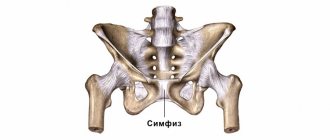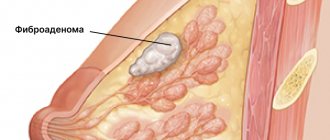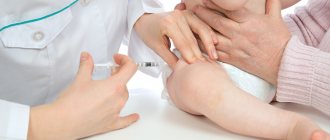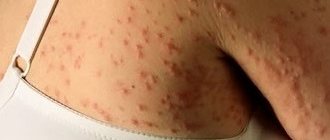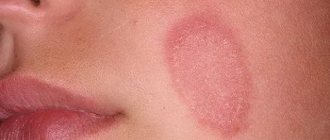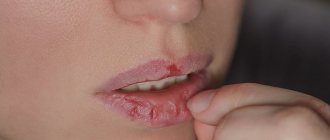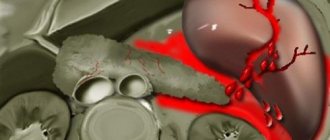Ascariasis is a parasitic infection caused by roundworms called roundworms. This disease is one of the most common, and ascariasis infection is especially often diagnosed in childhood.
After the egg enters the human body, it immediately begins its development. Worm larvae and adults themselves can spread throughout all organs and systems of the body. The brain, gastrointestinal tract, liver, kidneys, lungs, eyes and heart are affected. Untreated ascariasis in young children can cause serious delays in mental and physical development.
Is it possible to get ascariasis from a sick person? No, this method of transmission of the parasite is completely excluded. Transmission of the parasite from people infected with roundworm to healthy people is impossible.
After a mature helminth egg enters the human oral cavity, it goes through a complex path over the next two to three weeks, traveling through blood vessels and internal organs. During this time, a larva emerges from the egg and settles in the small intestine. Here she continues her development.
The total life cycle of one roundworm is about 12 months. Only one female helminth can lay up to 240 thousand eggs in her life. But they are all immature, and therefore do not pose a danger to humans. They are not contagious.
To ripen, they need to get into the ground and lie in it for at least 48 days at an air temperature of at least +17 ° C and high air humidity. Otherwise, the egg either will not ripen at all, or its ripening will last several months. Infection itself occurs when a person swallows a mature egg.
Scientific studies have shown that the causative agent of ascariasis is transmitted exclusively from person to person. But worm eggs can enter the carrier’s body in several ways.
Possible routes of transmission
The most favorable conditions for parasite infection occur with the onset of spring. It was at this time that people began to go out into nature and go to their summer cottages. Eating unwashed greens and berries directly from the garden may well cause infection with roundworm eggs.
Playing in the sand is a common cause of roundworm infection in childhood.
The most common methods of transmission include:
- water;
- contact and household;
- food.
Infection through water
Scientists have proven that one of the main methods of transmission of ascariasis is waterborne. Worm eggs that have reached maturity can retain their activity even after being in water for a long time, and after entering the host’s body, begin development.
Infection occurs quite often this way. In stagnant waters there is a large accumulation of both cysts and mature eggs. Ingestion of parasites can occur during bathing and when using water to wash dishes or wash vegetables and fruits.
Poorly assembled water supply can become a risk factor, and then transmission of parasites can occur when drinking poorly treated water. That is why doctors recommend boiling water before use.
Contact-household method of infection
The ways of infection with ascariasis are numerous, but contact and household ones have a special place. Fertilized worm eggs, waiting for their carrier, surround us almost everywhere. A person, without noticing it, brings roundworm eggs into the house. At the same time, they can get on both food and household items. Infection with roundworms in this case is almost inevitable.
You can also catch the parasite through dirty hands. In childhood, the disease is diagnosed quite often in children attending kindergartens. A common cause is playing in the sandbox.
It has been established that infection with roundworms is also possible through the mediation of ordinary flies. Insects carry parasite eggs on their legs and abdomens, sitting on the remaining unprotected food products. Therefore, contact-household transmission of the pathogen can be called one of the most common methods.
It is worth noting that it is almost impossible to prevent infection with ascariasis using this option. Even strict adherence to hygiene rules cannot exclude all factors, since the pathogen can also be acquired during a normal handshake (if the person is not very clean and does not follow basic rules of personal hygiene).
Helminths can cause intestinal obstruction
There is an opinion that you can get ascariasis through close contact with cats. Scientists have long proven that it is impossible to become infected with human roundworms from pets. Helminths are adapted to live only in the human body and a cat, as a carrier, is not suitable for them.
And yet, representatives of the cat family, while not being direct carriers, can become potential carriers of the infection. An animal may well carry worm eggs on its fur and paws.
And when an adult or child strokes a cat, they automatically transfer the egg to their palm, and then, if their hands have not been washed, it enters the mouth and further into the gastrointestinal tract. After which the development cycle of the parasite begins.
How to protect yourself from infection? It is recommended to avoid “kissing” cats and dogs: you should not let them lick your face or rub their muzzle against it. Your pet needs to be washed periodically, and after coming in from outside, wipe its paws with a damp cloth.
Food route of infection
The disease can also be transmitted through food. Quite often, ascariasis is contracted by eating raw or semi-raw meat products, dried/salted fish, unwashed fruits and vegetables.
It is also impossible to completely exclude the food method of obtaining helminthic infestation. To become infected with roundworm cysts, it is enough not to cook meat or fish until cooked. The raw part of the product may well contain viable parasite eggs, which, after entering a favorable environment, will begin to develop.
In addition, it is impossible to maintain total hygiene. Accidentally forgetting, a person can eat, for example, an unwashed apple, which can cause infection.
How dangerous is ascariasis?
Once in the body, helminths not only feed on it, but also suppress the immune system. The state of immunodeficiency makes the child’s body susceptible to bacterial, viral and other infections, contributes to their protracted course and the formation of carrier status, and reduces the effectiveness of preventive vaccinations. Ascariasis when parasitized by a large number of helminths can be complicated by intestinal obstruction, jaundice, pancreatitis (inflammatory process in the pancreas). In some cases, roundworms, ascending the digestive tract, reach the pharynx and penetrate the respiratory tract, which causes asphyxia (severe breathing difficulties due to lack of oxygen). Sometimes roundworms affect the genitourinary system, causing cystitis and vulvitis.
What happens after infection?
You now know how roundworms become infected, but what happens in the human body? After swallowing a mature egg, its active development begins: a larva soon emerges from it. The helminth feeds on glucose and other necessary substances, which it receives from incoming food.
The development of roundworm occurs in several stages
The worm can migrate freely, settling in any organ. Ascaris is found not only in the intestines; they can parasitize in the lungs, liver, gallbladder and pancreas ducts.
Modern methods of treating ascariasis in children
Roundworms are dangerous not only because the sick person does not receive the nutrients he needs. During migration, parasites cause significant damage to organs, which in some cases leads to irreversible changes.
The rotting waste products of helminths cause severe poisoning of the body, which is accompanied by a deterioration of immune defense. If characteristic symptoms appear - skin rashes, itching, cough, accompanied by disturbances in the gastrointestinal tract - it is recommended to visit a doctor and undergo the appropriate tests.
Treatment of the disease is carried out with modern drugs that effectively destroy adults, larvae and eggs. In most cases, hospitalization is not required for a sick person and therapy is carried out at home.
What is ascariasis?
The human roundworm is a large dioecious parasite. The male is noticeably smaller than the female, its length is 15-25 cm, the female can reach 26-40 cm, an adult female can lay up to 240 thousand eggs per day. This type of helminth can parasitize the intestines for a year. Ascariasis is common in all climatic zones of the globe, with the exception of permafrost areas, highlands and deserts. According to the WHO Expert Committee, more than 1 billion people in the world suffer from ascariasis every year, most of them are children of preschool and school age. The highest incidence rate is observed in regions with a hot climate: Asia, the North Caucasus, Transcaucasia, Sakhalin and Tomsk regions, Primorsky Krai.
Prevention of infection
The disease is most often transmitted through household contact. To avoid infection, it is enough to follow the basic rules:
- after returning from the street, you must wash your hands with soap;
- the house must be kept clean;
- food must undergo high-quality heat treatment, and fruits and vegetables must be washed in hot water.
The main method of infection is direct contact with the soil, since mature helminth eggs are found in it. Every person is at risk, regardless of age.
Following basic rules of personal hygiene will help you avoid infection with roundworms.
Do not forget that ascariasis is an infectious pathology that can be diagnosed in both adults and children. The wide distribution of helminthic infestations is explained by the increased survivability of parasites - they can survive in even the most unfavorable conditions for them.
Infection can occur in completely unexpected places: it is quite difficult to protect yourself from infection. And if a problem does arise, you need to get qualified advice and help as soon as possible. It is necessary to get rid of parasites immediately, without waiting for serious complications to develop.
Information for the public
Be careful, ascariasis!
The spring and summer period is a time of high humidity and air temperature, which has a beneficial effect not only on the condition of the human body, but also on the development of a large number of various parasites, among which roundworms are one of the most common, and the disease they cause is ascariasis.
Roundworms are roundworms; unlike many other parasites, they are bisexual. Females reach a length of 40 centimeters, and males up to 25. Live roundworms are reddish-yellow in color, and after death they become whitish.
The source of infection is humans. However, a sick person does not pose an immediate danger to others, since the eggs that he excretes in feces must necessarily undergo the process of maturation in the soil. Immature eggs are released into the external environment with the feces of a patient with ascariasis, where they ripen in 10-40 days under certain conditions (t - 30º, O2 access, soil moisture 8% or more). Eggs can survive in the soil for up to several years (thanks to the five-layer protein-lipid shell).
Infection of a healthy person occurs when mature roundworm eggs are ingested while eating unwashed vegetables, fruits, and herbs containing areas of contaminated soil.
In the small intestine of a person, larvae emerge from the eggs, which after approximately 3-4 hours pass through the intestinal mucosa, penetrate the blood vessels and then through the intestinal vein system with the blood flow enter the liver; then through the inferior vena cava they end up in the right heart and through the pulmonary artery they penetrate into the lungs. In the lungs, the larvae from the vessels penetrate the alveoli and along the tracheobronchial tree enter the pharynx, are swallowed and mature in the small intestine to adult forms. This migratory phase lasts 10-12 days. The interval from ingestion of eggs to the development of sexually mature forms is about 8 weeks (on average 2 months). After roundworms reach sexual maturity, they begin to lay eggs, this happens 2-3 months after infection. Without treatment, the life expectancy of roundworm reaches 12-18 months. After which the roundworms die and can be excreted from the intestines.
The population's susceptibility to ascariasis is high. In infected areas, up to 80% of the population may become ill. This is due to the fact that the disease does not leave behind lasting immunity.
Ascariasis is widespread in areas with temperate and warm climates.
The clinical picture of ascariasis is varied; There are two phases: migratory and intestinal.
The onset of the disease can manifest itself with severe malaise, a dry cough or with a small amount of mucous sputum.
Changes in the skin are very characteristic of this stage, which often manifest themselves in the form of hives and small blisters with transparent contents on the hands and feet.
Ascaris allergens belong to the group of the most powerful parasitic allergens. There is also a toxic effect on the human body from the larvae themselves.
In the late (intestinal) phase, the body’s allergic mood weakens. The pathogenic effect is associated with the toxic effect of the products of activity and decay during the death of adult roundworms. Mechanical injuries by adult parasites of the small intestine also occur, up to its end-to-end damage. Ascaris parasitism leads to a deficiency of vitamins - pyridoxine (B6), retinol (A), ascorbic acid.
Much more often, patients note increased fatigue, changes in appetite, usually a decrease, nausea, and sometimes vomiting. Abdominal pain occurs in the epigastrium, around the navel or in the right iliac region, and is sometimes cramping in nature.
A frequent complication of ascariasis is intestinal obstruction, which is caused by the closure of the intestinal lumen with a ball of roundworms or due to a violation of the neuromuscular regulation of intestinal tone.
A serious complication of ascariasis is the penetration of helminths into the bile ducts and gallbladder. In these cases, severe pain occurs that is not relieved even by narcotic analgesics.
Penetration of roundworms into the pancreatic ducts causes acute pancreatitis. If they enter the vermiform appendix, it causes appendicitis or appendicular colic without inflammatory manifestations.
In some cases, roundworms, ascending the digestive tract, reach the pharynx and from here crawl into the respiratory tract, which causes death from asphyxia.
Diagnosis of ascariasis in the migratory stage is based on the recognition of eosinophilic infiltrates, taking into account clinical, radiological, hematological and immunological data.
The X-ray picture of these infiltrates can simulate tuberculosis, pneumonia, or lung tumor. The main difference between infiltrates in ascariasis is their rapid disappearance without any residual effects.
A reliable diagnosis of ascariasis in the first phase is based on the detection of ascaris larvae in the sputum. In this case, a general blood test may show eosinophilia (20-40-60%), ESR increases to 50 mm/h, a slight increase in leukocytes, anemia.
In the intestinal stage of the disease, the main method is to examine stool for roundworm eggs using microscopic methods.
However, the results of such an analysis will be negative during the period of migration of roundworm larvae, with a low intensity of invasion, as well as in the presence of only males in the patient’s intestines. Eggs appear in feces no earlier than 2 - 3 months after infection.
A sexually mature individual may be released with the patient's excrement. In this case, it is necessary to collect the helminth in a glass container and deliver it to the laboratory for macroscopic examination. After confirmation, consult an infectious disease specialist for further examination and treatment.
The efficiency of diagnosing ascariasis, especially at the stage of larval migration, can be significantly increased by using immunological methods in laboratories, with the help of which the blood serum of examined individuals is tested for the presence of antibodies to Ascaris Lumbricoides antigens. The results of a serological blood test make it possible to diagnose ascariasis in the early stages and begin timely therapy.
Currently, the most effective method for determining specific antibodies is the enzyme-linked immunosorbent assay (ELISA) with the roundworm antigen, which is characterized by a high degree of sensitivity, ease of production, and the possibility of standardization. Early immunological analysis allows treatment of ascariasis to begin before complications arise.
Preventive measures are based on hygienic education of the population - adherence to the rules of personal hygiene: washing hands after using the toilet and before eating, washing hands after going outside.
You can conduct diagnostic tests at the following address: Lipetsk, Gagarina St., 60A (transport stop “Ploshchad Heroev”), laboratory building, parasitological laboratory, 1st floor, tel. 308-651 (ext. 679).
Accreditation certificate No. ROSS RU.0001.510165 FBUZ “Center for Hygiene and Epidemiology in the Lipetsk Region”.
Classification
For the most curious readers, we have compiled a detailed clinical classification of ascariasis. It is based on several criteria:
1. By type:
- typical (manifest);
- atypical (asymptomatic).
2. By stages:
- early (migration);
- late (intestinal).
3. According to the severity of clinical manifestations:
- light;
- moderate severity;
- heavy.
4. For complications:
- uncomplicated;
- with intestinal complications;
- with extraintestinal complications.
In ICD-10 (International Classification of Diseases, 10th revision), the disease is coded B77.
Medicines
Photo: gripptips.ru
Infection with worms is dangerous, especially for children, so every family’s medicine cabinet should contain anti-worm medications and pharmaceutical preparations that have the most effective effect. To combat parasites, you can also use folk remedies, such as garlic, pumpkin seeds, fern extract, but only in addition to ready-made medical forms.
Doctors advise that if a parasite infection is detected, not to prescribe treatment on your own, but to consult a doctor for advice. Children are usually prescribed Nemozol.
Medicines for roundworms
Roundworms are the type of worms that are most often found in children. The use of drugs against ascariasis must be treated very carefully, especially if the drugs are prescribed to preschool children.
Drugs against ascariasis:
- Nemozol;
- Vermox;
- Pyrantel;
- McMiror;
- Piperazine.
Treatment of ascariasis with Nemazol
Pharmacological action of Nemozol for ascariasis.
The active component of the drug, albendazole, has an anthelmintic effect. Nemozol is effective against severe helminthic infestations and leads to the death of roundworms in intestinal cells. The drug Nemozol is eliminated from the body within twelve hours. In patients with diseases of the bile ducts, the period for complete withdrawal of Nemozol may increase. The drug Nemozol is effective against adults, larvae and eggs. Almost all nematodes and tissue parasites are sensitive to the action of the main component of the drug Nemozol.
There are contraindications to treatment with drugs for ascariasis, such as Nemozol:
- infectious intestinal diseases;
- viral diseases;
- pregnancy;
- breastfeeding children;
- days of menstruation.
It is recommended to take the drug Nemozol for ascariasis with fatty foods, which promote its good absorption. For children over two years of age and adults, Nemozol is prescribed in a dosage of one tablet (400 mg) or in a suspension of 20 ml. For children under two years of age, the recommended dose of Nemozol is 200 mg or a suspension of 10 ml. If necessary, Nemazol for ascariasis is taken again after three weeks.
Adults and children over 2 years of age should take 1 tablet of Nemozol with a dosage of 400 mg or 20 ml of suspension. Children under 2 years of age should be given 1 tablet with a dosage of 200 mg or 10 ml of suspension. If necessary, after 3 weeks, Nemozol can be repeated at the original dose.
Nemozol for ascariasis is not prescribed to pregnant women, as well as women who are breastfeeding. Treatment with Nemozol is contraindicated for children under one year of age.
Nemozol is also contraindicated for ascariasis in people with retinal damage, cirrhosis and liver failure.
Nemozol should not be prescribed for ascariasis in patients with depressed bone marrow hematopoiesis.
Side effects of Nemozol for ascariasis.
Exceeding the dosage of Nemozol leads to the following problems:
- nausea;
- dizziness;
- vomit;
- headache;
- gastrointestinal disorder.
In some cases, exceeding the dose of Nemozol for ascariasis leads to an increase in temperature, pressure, allergies and itching. Including the wrong dosage of Nemozol for ascariasis can lead to kidney problems and impaired hematopoiesis. There is no antitote for Nemozol poisoning; overdose is treated by gastric lavage and removal of intoxication.
While taking Nemozol for ascariasis, it is not recommended to drive a car, as it is dangerous.
Treatment with Nemozol for ascariasis is carried out only after consultation with a doctor.
Treatment of ascariasis with Vermox
Vermox is one of the most effective drugs for ascariasis, containing the active ingredient Mebendazole. The drug is available in tablet form in a dosage of 100 mg. The drug for ascariasis Vermox should be taken only after consulting a doctor, in a strictly prescribed dosage. Vermox is prescribed for some forms of helminthiasis, including ascariasis.
How to take Vermox correctly
Vermox for ascariasis is taken with water before meals, in the morning and evening, two tablets per day at a dosage of 100 mg, for three days.
Treatment with Vermox is incompatible with alcohol, fatty foods and medications for constipation.
At the end of treatment with Vermox, it is necessary to undergo a control examination for the presence of helminths.
Treatment of children from ascariasis with Vermox
Vermox is intended for children who become infected through contact with animals, in sandboxes, or through contact with other children. Tablets for ascariasis are prescribed by the doctor after testing for worms.
After taking Vermox, the helminths die on the third day and are excreted in the feces.
Before starting treatment, parents should carefully read the instructions for Vermox and act in accordance with them; the exact dose of the drug for ascariasis is prescribed by the doctor, in accordance with the age and weight of the child.
In some cases, treatment of ascariasis is carried out in combination with Vermox and Decaris. These drugs for ascariasis have different components and mechanisms of action on helminths; their overall effect helps to get rid of worms more effectively. Decaris destroys those types of helminths that Vermox cannot cope with.
How often and in what dosage should I give medications for ascariasis so as not to cause side effects? For the first three days of combined treatment with Vermox and Dekaris, it is necessary to monitor the child, see how he sleeps, whether there are any complaints of nausea, dizziness, or convulsions. If symptoms of an overdose of combination treatment appear, you should consult a doctor for advice.
Treatment with Decaris and Vermox for children of preschool and younger age can be carried out every six months. If such a need arises, Vermox plus Dekaris is given four courses per year, but always under the supervision of a pediatrician.
Treatment with Vermox is usually planned; tablets are given in the fall and spring, when the immune system is weakened. For adolescents, treatment is carried out once, with a Vermox tablet in a dosage of 100 mg, after meals. Drink plenty of water.
Treatment of ascariasis with Pyrantel
Treatment of ascariasis with Pyrantel is recommended by doctors all over the world, as this medicine helps to gently get rid of adult worms, their larvae and eggs. Pyrantel for the treatment of ascariasis can be given to children starting from six months of age, after consultation with a pediatrician.
The drug Pirantel has only one contraindication; treatment of ascariasis is contraindicated for people with liver disease.
The course of treatment for ascariasis with Pyrantel can be repeated after three weeks; this scheme is used for simultaneous infection with pinworms and roundworms. In case of weak effectiveness of the drug, the doctor may additionally prescribe treatment for ascariasis with Nemozol.
Use of Macmiror for ascariasis and lamblia
Macmiror is not used for ascariasis, but it is prescribed in combination with other drugs for the treatment of giardiasis and candidiasis.
Advantages of Macmiror:
- does not give side effects;
- easily excreted by the kidneys;
Macmiror acts against ascariasis, salmonellosis and various bacterial infections.
Not recommended for pregnant women and nursing mothers.
Treatment of ascariasis with Vormil and Piperazine
The drug Vormil is used to treat ascariasis, the active substance of the dosage form is albendazole, which destroys helminths at any stage of development. Consumed with fatty foods, in the dosage prescribed by your doctor.
Piperazine, the most commonly prescribed drug for ascariasis, affects the neuromuscular system of parasites, promoting their destruction.
Piperazine for ascariasis is such a mild remedy that it is prescribed even to pregnant women. The drug is contraindicated in diseases of the central nervous system.
Factors contributing to helminth infection
It is very easy to become infected with worms; then it is difficult to get rid of such a neighborhood. Worm eggs are introduced into the body by the future carrier of helminthiasis with the help of dirty hands, unwashed fruits, insufficiently cooked meat dishes, eating raw fish and failure to comply with basic hygiene standards.
Pets – cute cats and dogs – can also share worms with their owner. And also people suffering from helminthiasis, but sometimes not even suspecting it. Flies also participate in the spread of worm eggs, transferring them with their paws and proboscis to openly lying food and dishes.
Worm eggs can be found anywhere: on surrounding objects, door handles, on clothes, in dust, in the ground.
You can swallow contaminated water while swimming in any body of water, or become infected while working with soil.
Depending on the method of infection, there are contact helminthiasis (transmitted from person to person), geohelminthiasis (transmitted through the soil) and biohelminthiasis (when infected meat is eaten).


